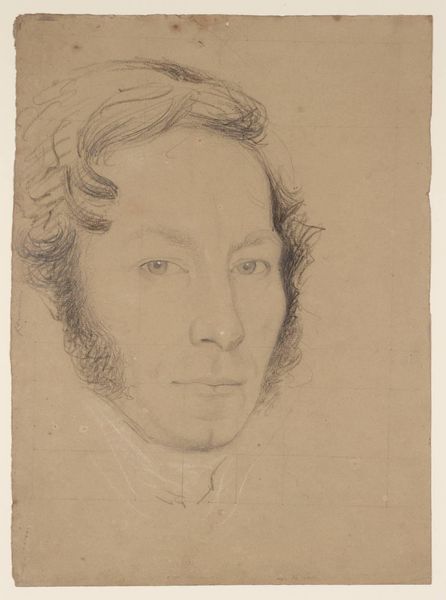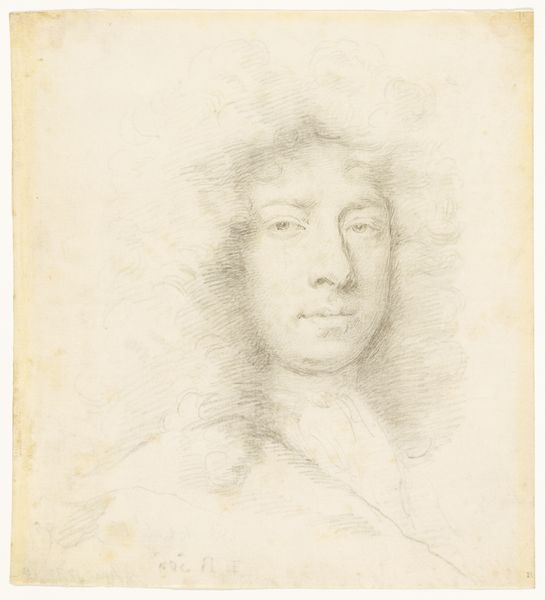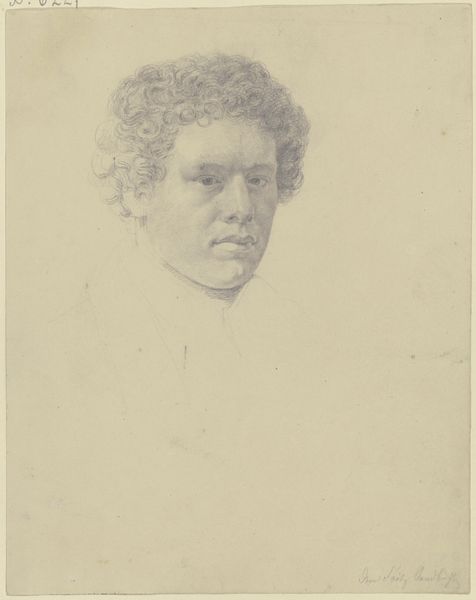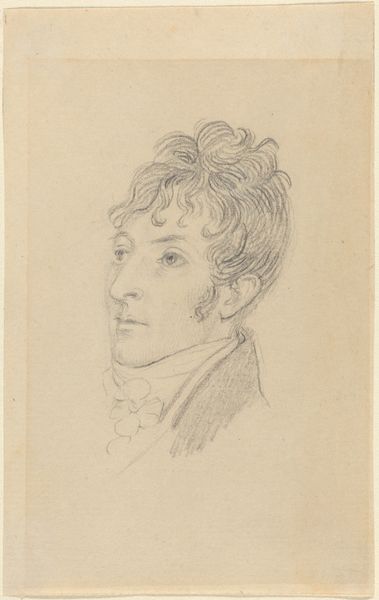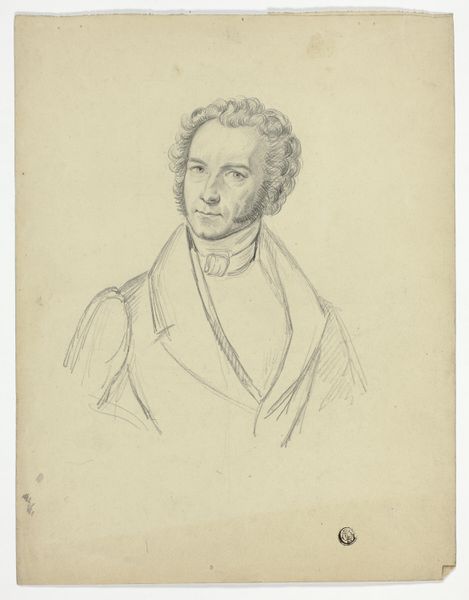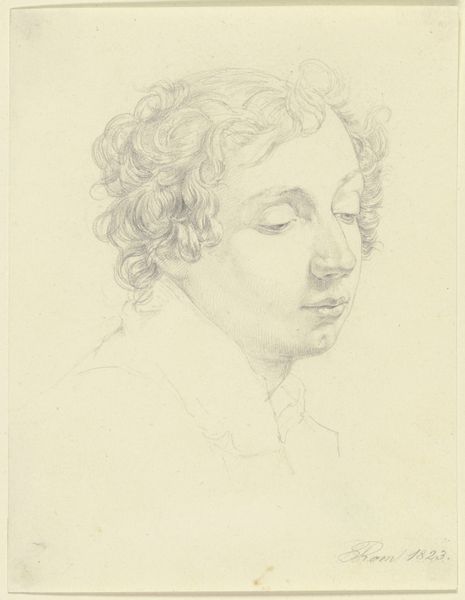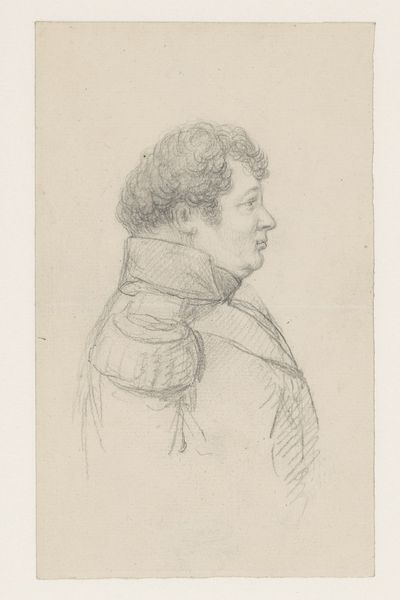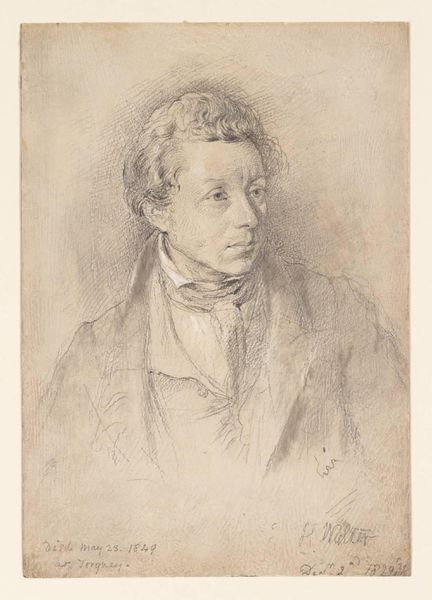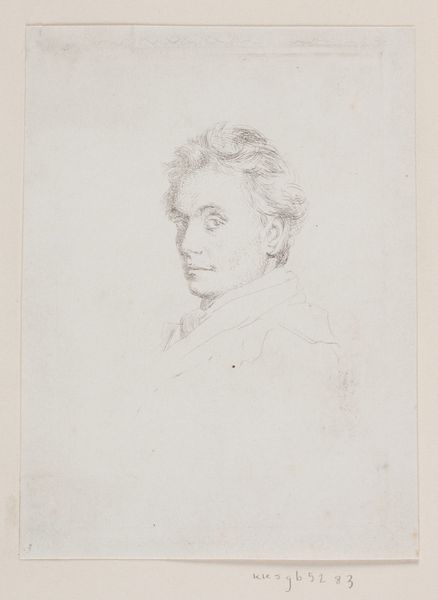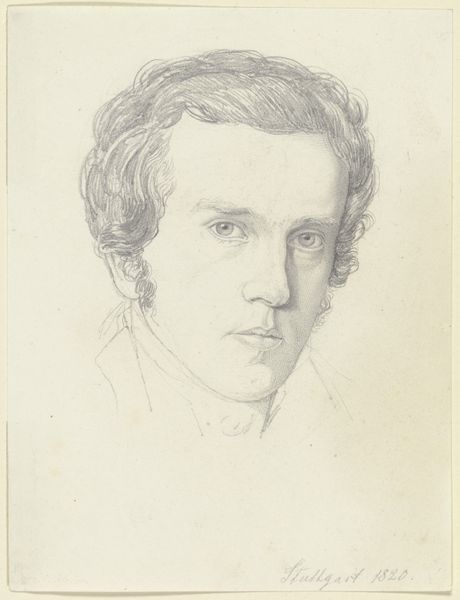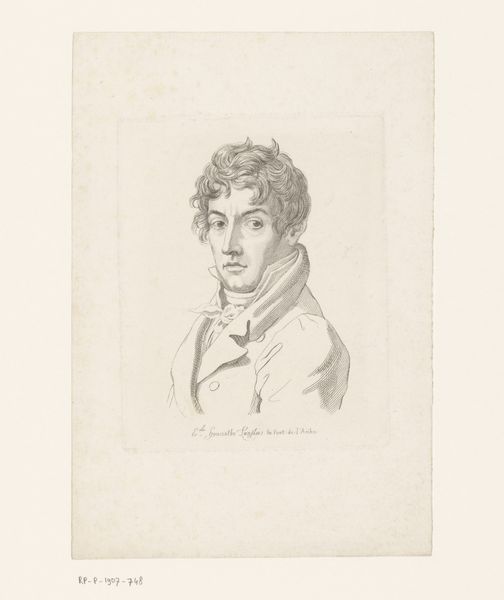
drawing, paper, pencil, chalk, graphite
#
portrait
#
pencil drawn
#
drawing
#
16_19th-century
#
paper
#
pencil drawing
#
pencil
#
chalk
#
graphite
#
portrait drawing
Copyright: Public Domain
Editor: This is "Portrait of a Man" by Eugen Eduard Schäffer, currently held at the Städel Museum. It looks like it's a drawing made with pencil, graphite, and chalk on paper. The man’s gaze is quite intense! What stands out to you most about its composition? Curator: Immediately apparent is the tonal range achieved with such limited media. Consider the textures: the delicate hatching that defines the contours of his face contrasts with the denser, almost scribbled rendering of his hair. Schäffer masterfully articulates volume and form through strategic applications of light and shadow. Editor: So, it’s about the contrast and textures more than likeness, perhaps? Curator: To an extent. While a degree of representational accuracy is present, the artistic merit resides in the formal elements. Notice how the unfinished quality of the lower portion of the drawing directs our focus upwards, emphasizing the meticulously rendered face. This deliberate asymmetry is a critical component of its design. Editor: It’s true; my eyes really are drawn up to the face and head. What would you say is the role of the negative space in the lower part of the work? Curator: The expansiveness of the negative space throws the head into sharper relief. That negative space is essential because it isolates the figure. It accentuates its self-containment. Editor: I see how carefully the details have been thought out and planned. Thanks, that gives me a different perspective on the portrait. Curator: Indeed. Approaching it as a study in form, line, and texture reveals the true depth of the work.
Comments
No comments
Be the first to comment and join the conversation on the ultimate creative platform.
